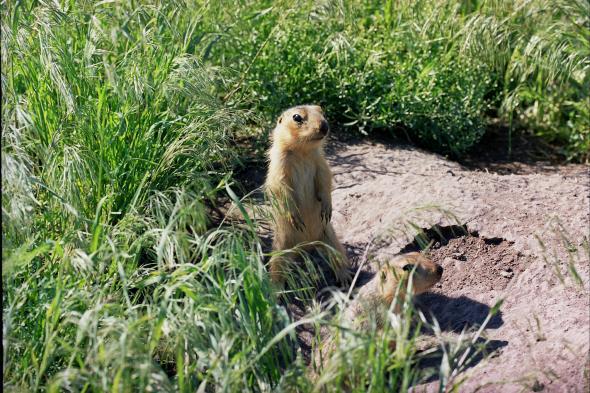Do you ever look in the mirror and think there’s something wrong with you? That maybe your tail isn’t bushy enough, your pelt’s lost its luster, or you’ve eaten a few too many acorns lately? Well, cut it out! I’m here to tell you that it isn’t you—it’s them. No, it’s not your imagination, single women: There literally aren’t enough men out there!
That last sentence is the actual headline of a Vice article that presumably exists to make single women feel better about themselves and their supposed predicament. But it’s also scientifically true—at least if you’re a yellow ground squirrel. In the past, zoologists had thought that female squirrels’ lack of romantic encounters stemmed from their body condition, age, or competition from other female squirrels. Now, we know that the main reason some females aren’t having babies is that there aren’t enough males around—and the ones that are around are having a hard time finding them.
A shortage of males has been shown to be a factor in female reproductive failure in some insects, fish, and spiders. But in most mammals, it’s the reverse: Females tend to be the limiting factor. After all, one male can impregnate plenty of females. Plus, raising the young takes time and resources—just ask your mom!—and most of that burden falls to the females. Sadly, male squirrels aren’t really into parenting: “They mate, and they eat,” as zoologist and study author Nina Vasilieva puts it.

Olga Batova
But when Vasilieva studied the sex lives of wild squirrels near the Russian village of Dyakovka over four years, she found some unusual traits that made females the scarcer resource. First, female yellow ground squirrels live alone in single-squirrel burrows, where they spend nine months out of the year quietly sleeping. Second, when they finally do emerge, they have a very limited span of time—as short as a single day—in which they are receptive to mating. If they fail to mate within that time, they have to wait until the following year. And, given that their lives last a brief two to three years, that’s cutting it close. “I actually saw with my own eyes some sad females which were not visited by any males,” Vasilieva says forlornly.
Before you feel too sorry for the females, though, consider that it’s no walk in the park to be a male squirrel either. After all, he’s stuck chasing an elusive, silent target that pops up once a year. Where’s squirrel Tinder when you need it?
Make no mistake: These females want to mate. In squirrels, “it’s reasonable for females to invest in reproduction as much as possible, even if she is in bad physical condition,” says Vasilieva. “Female ground squirrels have a very low reproductive cost. Actually, reproduction does not affect female survival and future reproduction in yellow ground squirrels at all.” But they aren’t exactly making it easy for the male squirrels. As a result, researchers found that 30 to 40 percent of sexually mature females failed to reproduce, they reported Friday in the journal Science Advances.
This finding goes well beyond squirrels: The dearth of males at the right time and place could also apply to lemurs or to other hibernating rodents, Vasilieva says. But perhaps there’s a larger message here for us all. Ladies, stop blaming yourself for the fact that there don’t seem to be enough eligible men around. You’re perfect just the way you are. But also, best not to spend the majority of your time in an underground hole.
